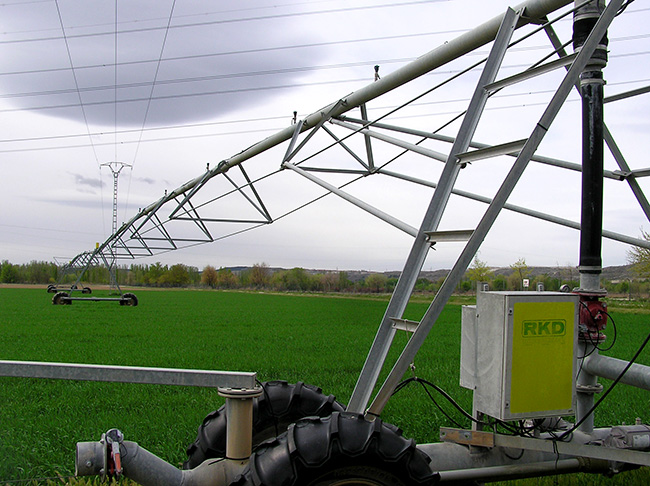The crucial balance between water, energy and agriculture
Researchers at the ETSIAAB apply a system dynamics model to assess this nexus in Andalusia and improve agricultural and environmental policies coordination.
February, 2021
Food production depends heavily on water and energy consumption. A team of researchers at the Escuela Técnica Superior de Ingeniería Agronómica, Alimentaria y de Biosistemas (ETSIAAB) has applied a system dynamics model to assess this nexus in Andalusia. In this region, agriculture plays a significant socioeconomic role. First, the objectives were quantifying the interlinkages between water, energy and food, and second, assess the different future scenarios. Another goal was improving the required coordination of agricultural and environmental policies to deal with major pressures on land and water resources.
The researchers applied a model that combines quantitative and qualitative methods. Thus, this study used statistical data and projections and considered the assessments of the stakeholders in the region, such as policymakers and other participants responsible for deciding strategies and regulations, and representatives of private associations and civil society.
The authors of this research recall that water–energy–agriculture balance is crucial for the primary sector's socioeconomic development in Andalusia. However, they watch out for clouds on the horizon, since some political inconsistencies may overshadow the future. Long-term results from the baseline scenario show a sensitive relationship between water availability, irrigation costs (including energy cost), and agricultural production. This is, in part, due to the large investment made in irrigation systems, as they explain.

Sistema de riego por aspersión.
The ETSIAAB's researchers point out the need for a water pricing policy to promote water-savings and overcome this essential resource's imminent scarcity, based on objective data. Their analysis suggests that the combination of water pricing and energy efficiency improvement is the strategy with the highest systemic relevance for the agricultural sector's economic aspects.
The authors concede that water price increase affects the average income from crops negatively in the scenarios analyzed. However, they note that this increased expenditure can be, to a greater extent, offset by savings in water and energy for irrigation, which also contributes to reducing the impact of agriculture on global warming. Besides, they consider the possibility of using non-irrigated areas for growing rainfed crops or promoting ecological focus areas to counter soil erosion.
According to the researchers, the sustainable management of the water-energy-food nexus requires the design and implementation of policies that consider the synergies and trade-offs among the different sectors, especially in the context of climate change that exerts more pressure. Hence, the importance that they place on integrated approaches such as the one used in their study to move towards more sustainable agriculture.
The ETSIAAB researchers' work is part of the SIM4NEXUS (Sustainable integrated management for the nexus of water-land-food-energy-climate for a resource-efficient Europe), funded by the European Horizon 2020 program. Based on new scientific evidence, it tries to promote the sustainable and integrated management of water, land, energy and food resources in Europe and elsewhere worldwide. It has a dozen case studies, implemented at different scales: regional, national, cross-border, European and global.
GONZÁLEZ-ROSELL A., BLANCO M., ARFA I. (2020). “Integrating Stakeholder Views and System Dynamics to Assess the Water–Energy–Food Nexus in Andalusia”. Water, 2020, 12, 3172.

